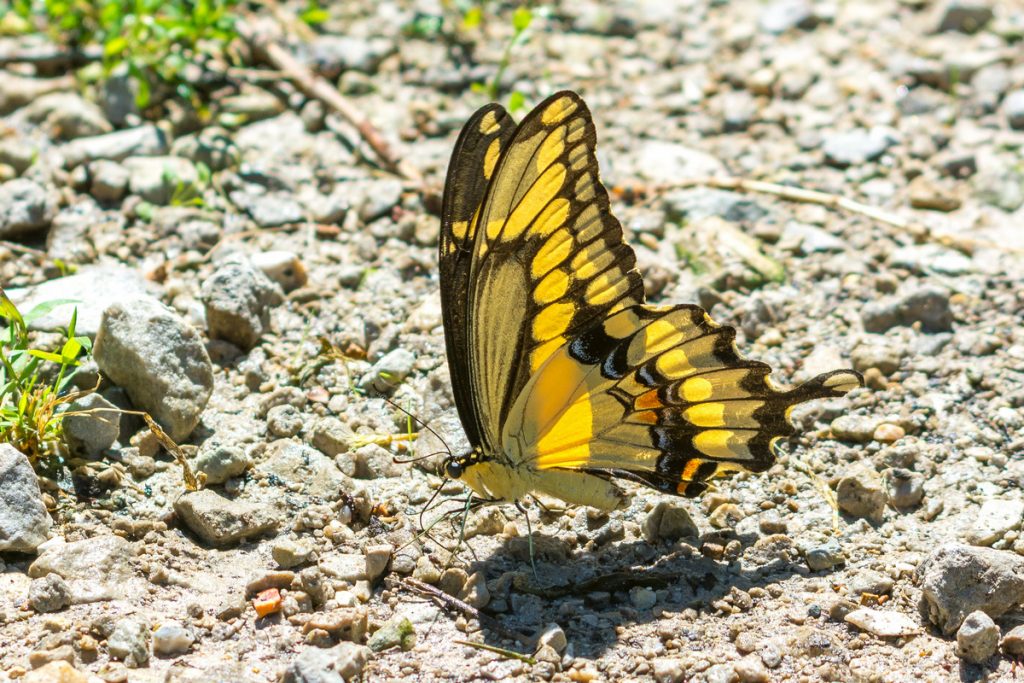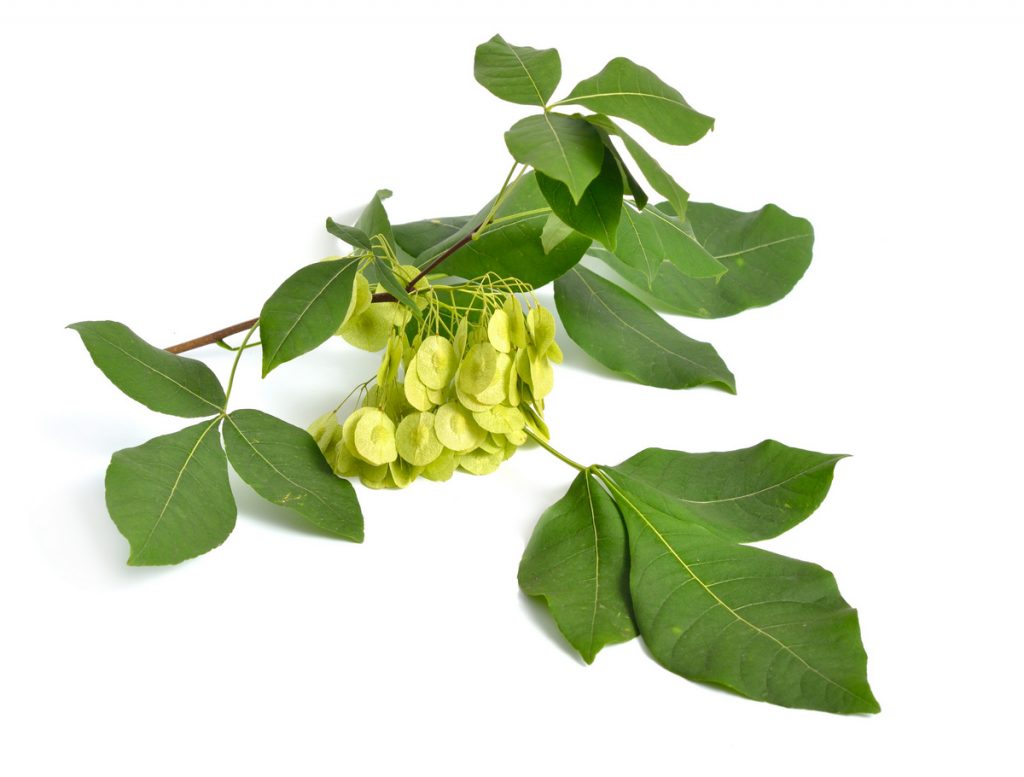This part of Oliver’s Woods is a good representation of Indiana forests. It has a mix of oak (Quercus spp.), hickory (Carya spp.) and sugar maple (Acer spp.) in an area that floods every two or three years. The soil is gravelly in places and sandy in others, indicating the glacial outwash history shared by many riparian forests along major rivers in the state. The White River was a glacial outwash stream, and the deposits here are about 12,000 years old, dating back to when the Huron-Erie and Saginaw lobes of the miles-high Laurentide Ice Sheet retreated to Canada.
In spring, be on the lookout for wildflowers like Prairie trillium (Trillium recurvatum), spring beauty (Claytonia virginica), cut-leaved toothwort (Cardamine concatenata) and—for a couple of weeks—a flurry of wild hyacinth (Camassia scilloides). An important element to our native plant communities consists of the relationship between butterflies and host plants. Look for American hoptree (Ptelea trifoliata), with its alternate compound leaves with three leaflets: It is the host plant for our largest North American butterfly, the giant swallowtail (Papilio cresphontes), which calls Oliver’s Woods home.
GLACIAL OUTWASH materials (gravel, sediment, sand) deposited by flowing glacial meltwater. When the land at the edge of a melting glacier slopes away from the glacier, meltwater streams may be formed. Conversely, when the land at the edge slopes towards the glacier, ice-marginal lakes may form.
RIPARIAN situated along wetlands or waterways
HOST PLANTS specific plant species relied upon by butterflies as a place to reproduce, acting as both a place to lay eggs and as food for larva



